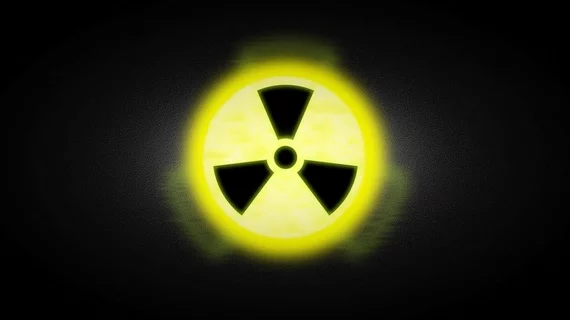Placing homemade shields under the angiographic table during percutaneous coronary procedures cut operators’ exposure to radiation at the pelvic level by a median of 72 percent, according to a single-center study in Circulation: Cardiovascular Interventions.
Alessandro Schiahbasi, MD, PhD, and colleagues with Sandro Pertini Hospital in Rome investigated the use of under-the-table shielding in relation to their current standard of care, which included extensive shielding for the operator through a lower body radiograph curtain fixed to the angiographic table and lead glasses, aprons, thyroid collars and suspended protective shields. Additional drapes were placed on each patient’s pelvic region and legs.
Even with these measures in place, the use of adjunctive shields under the table further reduced the average operator radiation dose to the pelvic region from 42 µSv to 13 µSv as measured by wearable dosimeters outside of the lead aprons. The median doses at the pelvic level beneath the apron were 0.75 µSv and 0.22 µSv, respectively.
The researchers randomized 157 patients undergoing 205 coronary procedures—122 diagnostic angiographies, 83 percutaneous coronary interventions—to either standard shielding or adjunctive under-the-table shielding.
“For the first time, we documented that a simple protective shield placed under the angiographic table is able to significantly reduce the operator radiation exposure at pelvic and thorax level,” wrote Schiahbasi et al., who noted the under-the-table shields didn’t limit the movement of the operators or radiation tubes. “In particular, the effect is mainly important at pelvic level with a median reduction of 71% in operator dose.”
The average radiation reduction at the thorax level outside the apron was much smaller but still statistically significant—going from 4 µSv with standard shielding to 2 µSv with under-the-table shielding. Schiahbasi and colleagues said previous studies of radiation exposure have focused on operators’ upper bodies, and traditional shielding methods may be more effective for those areas than cardiologists’ lower bodies.
“The reason for this high dose at pelvic region is because of the closer position of this part of the operator body to the radiation source and to the role of the protective drapes placed on the patient that mainly block the scattered radiation coming from the patient and directed upward,” they wrote.
“In the current study, the protective effect was observed on top of the best measures known to date to reduce operator radiation exposure (low frame rates, fluoro store, and use of adjunctive protective drapes) increasing the potential role of our devices.”
The authors tested two homemade under-the-table shields. One was a small curtain made from a ceiling radiography curtain and the other was a small drape obtained from a previous protective skirt. Both forms of protection were similarly effective at reducing radiation dose, the authors noted.
Even after normalizing the procedures by dose area product and air kerma, the additional shielding was linked to relative reductions in pelvic radiation exceeding 60 percent compared to standard shielding.
“The reduction in operator radiation dose in absolute terms is little and seems to be trivial, but according to the linear no threshold principle in radioprotection, no safe doses exist, and the lower the exposure, the lower is the risk,” Schiahbasi and co-authors wrote.
Some characteristics of the single-center study may limit its generalizability, the researchers acknowledged. For one, other cath labs may have different setups, which could impact the operator radiation doses. Also, all the procedures were performed via transradial access, and different access routes may produce different results.

